
What is classified as an AI application?
The term “artificial intelligence” is sometimes used in European patent applications and patents without further explanation or elaboration, AI apparently being taken to be no more than a known, off-the-shelf option. Such applications and patents are very unlikely to be concerned with developments in AI.
The International Patent Classification (IPC) helps us here, with an extensive dictionary in which “catchwords” are linked to IPC classifications. Although catchwords are often linked to multiple classifications, the catchword “Artificial Intelligence” is linked to only one classification:- G06N. That classification at least covers machine learning and neural networks, technologies at the core of developments related to artificial intelligence. The details of the technologies covered by G06N are given further below. Applications and patents given the classification G06N provide a useful indication of trends in European applications and patents concerned with AI and uses of AI.
Is the number of AI applications at the EPO growing?
There is huge growth in AI filings at the EPO. The chart below shows the numbers of European patent applications having the classification G06N which were published year by year from 2010 to 2020.
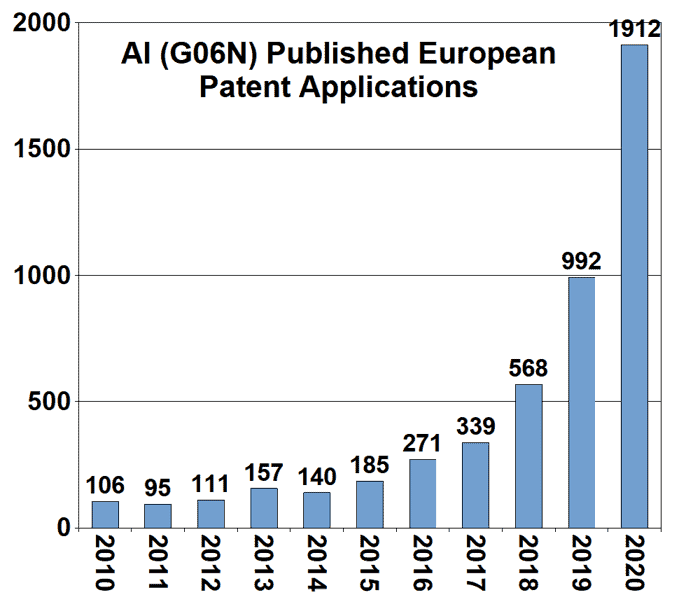
Growth in the numbers of published G06N applications took off from 2014 and taking that year as base year the number of published G06N applications in 2020 was over twelve times the level of 2014. This means that the percentage growth in published G06N applications since 2014 has been far greater than the percentage growth in total European patent applications published (shown in a comparison graph below). Also, Covid-19 does not appear to have affected this growth.
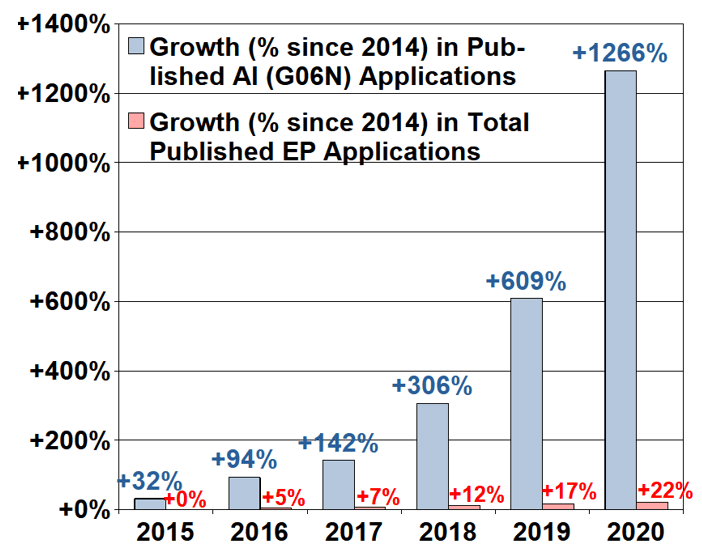
Who is applying for AI patent applications at the EPO?
Over the five-year period 2016 to 2020 just over 4000 AI (G06N) applications were published. Around 1000 different applicants were responsible for these applications. The top 25 applicants are listed in the table below. These 25 applicants accounted for just about half of all the 4000 AI (G06N) applications.
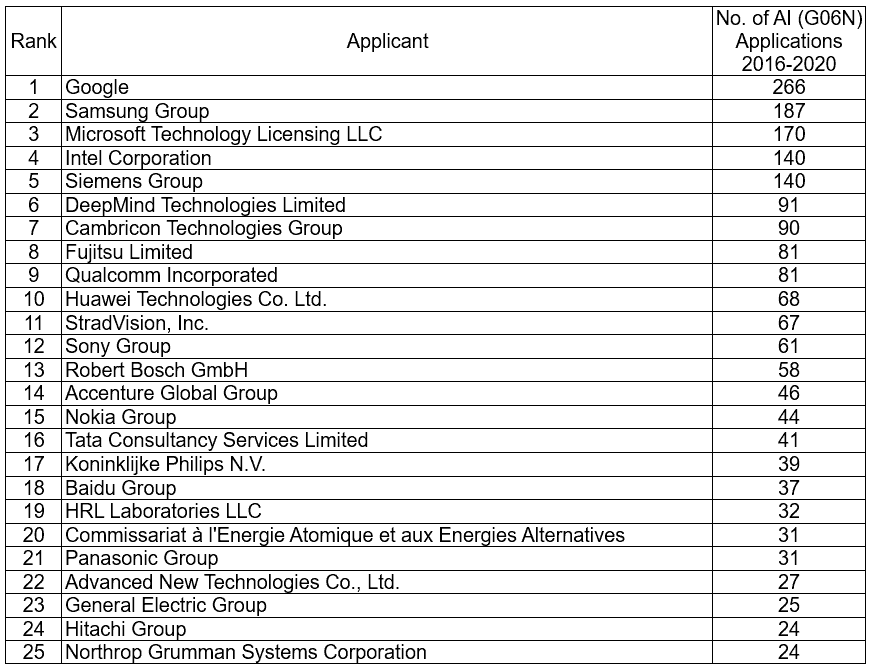
And is it easy to get a granted AI patent at the EPO?
Apart from grant as a patent, processing of a European patent application may be concluded by the application being refused, withdrawn or deemed withdrawn. The charts below show year by year numbers of AI (G06N) applications processed to conclusions.

For AI (G06N) applications processed to conclusions, the proportion granted as EP patents has been increasing. For AI (G06N) applications concluded in 2019 and 2000 grant as patents was the most likely outcome but was still the outcome for less than half of the applications. Compared to all European applications in general, grant as patents is proportionally still a significantly less likely outcome for AI (G06N) applications (40% in 2020 compared to 69% for all European applications in general). Refusal is a much more likely outcome for AI (G06N) applications than for all European applications in general (16% in 2020 compared to 4% for all European applications in general).
These statistics are likely caused by the classification of AI at the EPO as a mathematical method which is not technical and cannot support an inventive step unless linked to implementation or specific technical application. The percentage outcomes for AI and all European applications are shown clearly below.
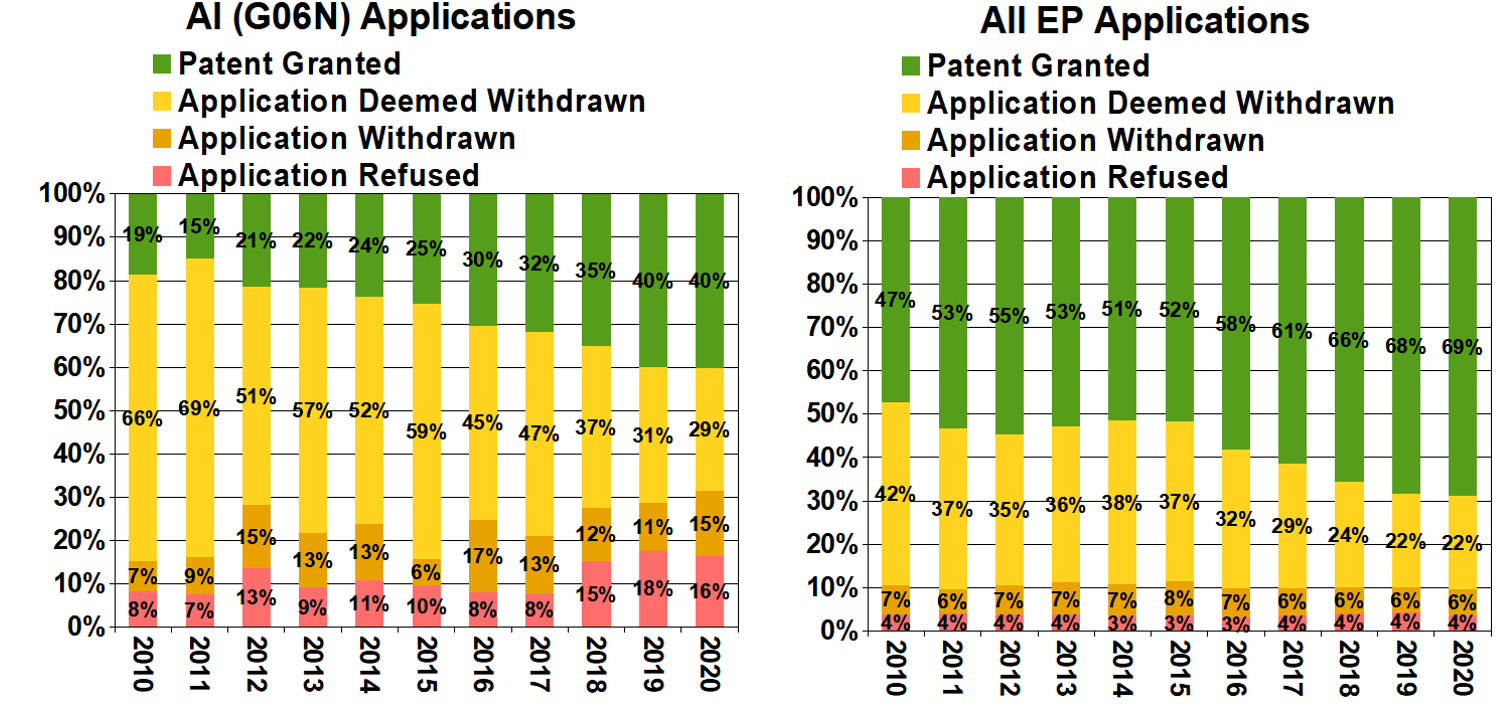
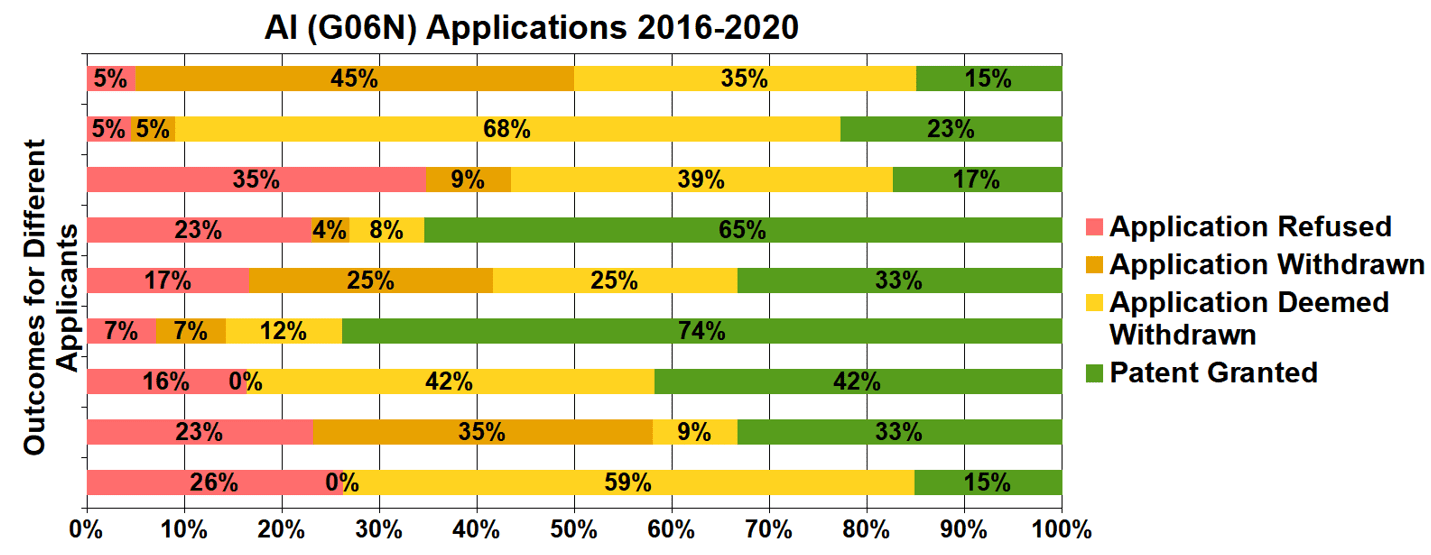
Although the statistics indicate that in general grant is a less likely outcome and refusal a more likely outcome for AI applications than for all European applications, outcomes do vary greatly for different AI applicants/patentees. For a few different AI applicants/patentees the outcomes of applications processed to conclusions over the five year period 2016 to 2020 are indicated in the chart below. The proportion of patents granted varies from 15% to 74% and the proportion of applications refused ranges from 5% to 35%. Different applicants/patentees also appear to have quite different policies regarding withdrawal of applications – two of the ten applicants did not positively withdraw any applications as opposed to allowing them to be deemed withdrawn. Other applicants have positively withdrawn good proportions of their applications (which may be as a result of a general policy, or a reaction to poor prospects for success).
What AI technologies do the AI patent applications at the EPO cover?
The IPC can help us again here. The 4000 European patent applications having G06N IPC classifications published in the five years 2016 to 2020 have lead classifications and, usually, further classifications along with the lead classifications. The 4000 lead classifications of the European patent applications are spread over more than 700 different individual classifications and the applications have a total of around 15000 classifications spread over about 2000 different individual classifications.
The detailed hierarchy of IPC classifications of the technologies covered by G06N is given in the table below along with the number of occurrences of the classifications across the 4000 European patent applications. By a clear margin the most frequent classification, G06N 3/04, concerns architecture of neural network models, followed by learning methods for neural network models.
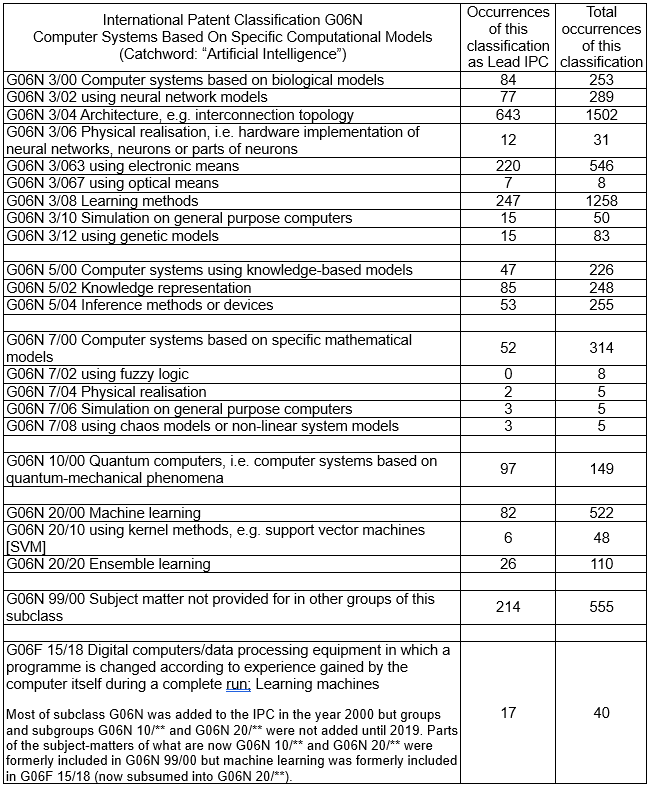
Where is AI being used, according to European Patent Applications?
AI has found use across many fields, from internet search engines to self-driving cars, to medical diagnostics, finance and even agriculture. If potential fields of use of a development in AI are only mentioned in the description in a European patent application they may not be reflected in an IPC classification applied to the application. Nonetheless, and particularly if a potential field of use appears in a claim of the application, this may be reflected in an IPC classification applied to the application, either as lead classification or as a further classification, which is not a G06N classification.
The most common non-G06N classifications applied to the 4000 European patent applications published in the five years 2016 to 2020 are indicated in the table below. The most frequent classifications relate to pattern recognition and image analysis. Of course these techniques can, in turn, be used in many different contexts.
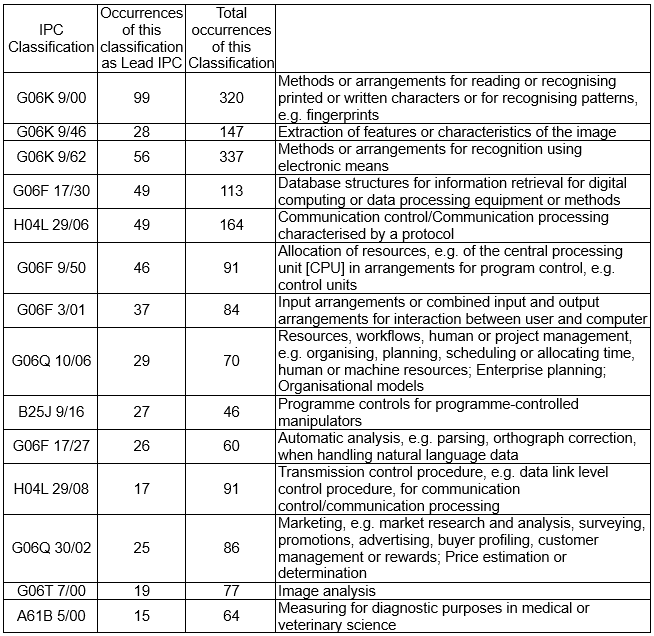
Can you show me some of the recent AI applications granted at the EPO?
We list below the 32 AI (G06N) patents granted in November 2021, with links to the European Patents Register, for you to browse file histories and specifications at your leisure.
That AI has found use across many fields could be illustrated by the patents granted in November, which have concerns from cell (biological) analysis to motor vehicle loss assessment (for insurance purposes), to optimization of mobile phone networks, to detecting whether a self-driving vehicle is travelling in a one-way street.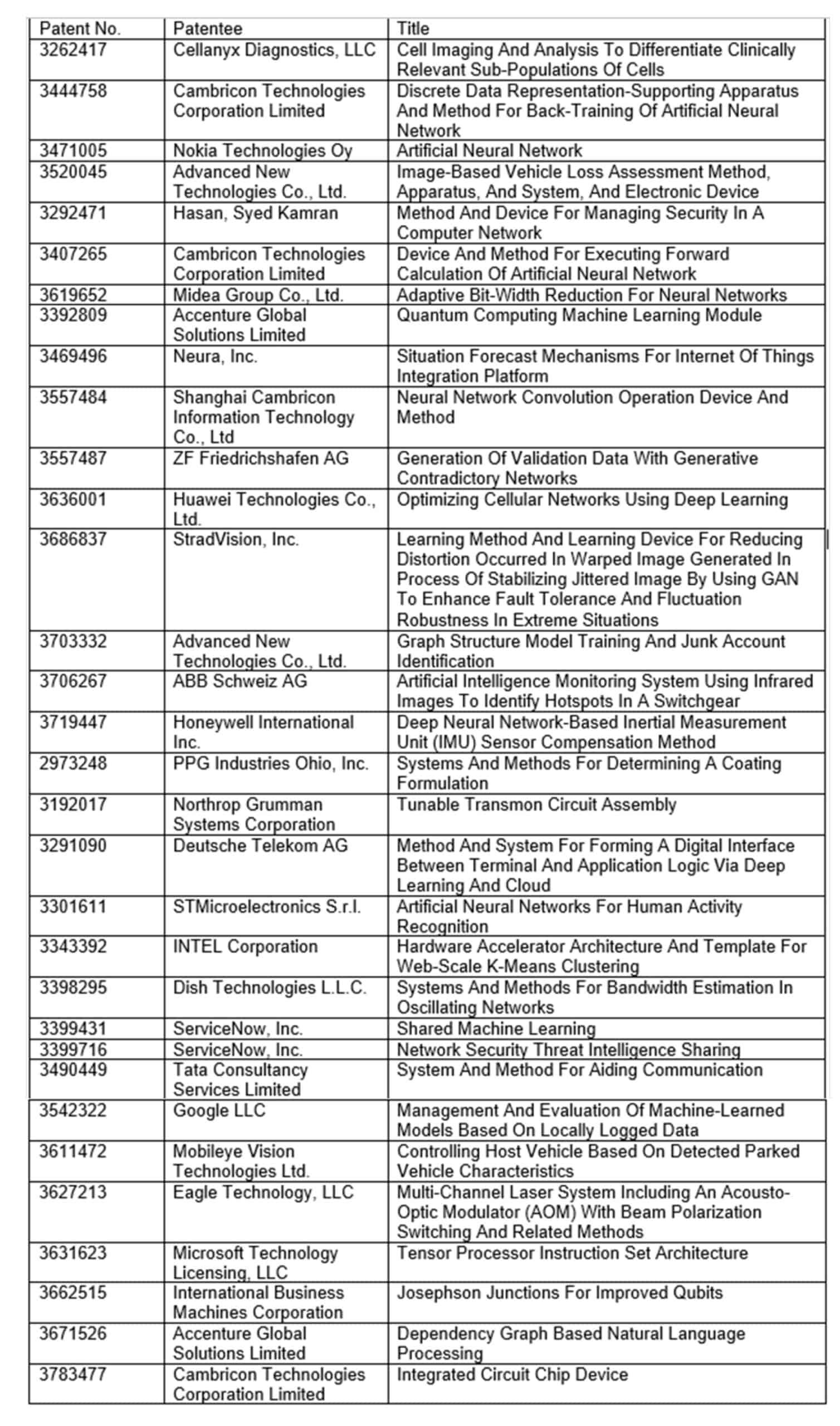
Do AI patents get opposed at the EPO?
Over the period 2010 to date only nine AI (G06N) European patents have been opposed, as listed in the table below.
Two oppositions have been finally decided by first instance decisions (1825424 – Opposition rejected, no appeal; 2748686 – Opposition rejected, appeal withdrawn). No oppositions have yet been finally decided after appeal.
The last four oppositions listed in the table appear to be “straw man” oppositions.
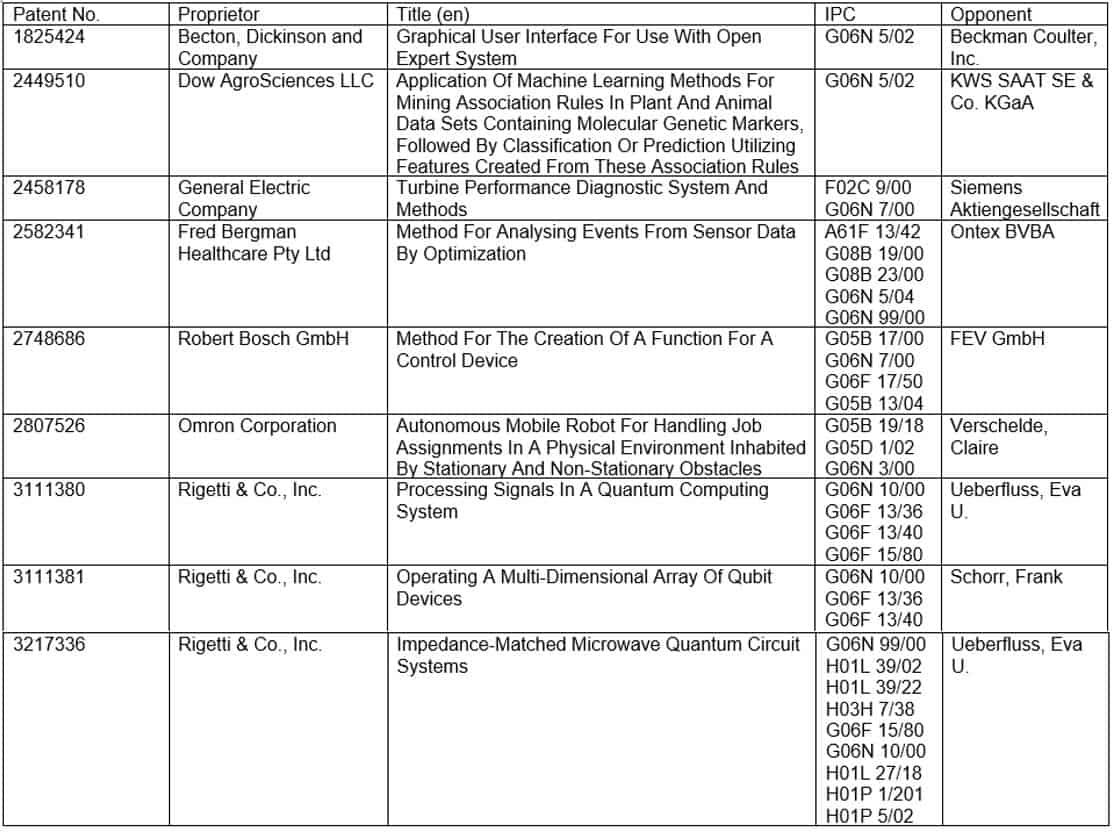
This is for general information only and does not constitute legal advice. Should you require advice on this or any other topic then please contact hlk@hlk-ip.com or your usual Haseltine Lake Kempner advisor.
